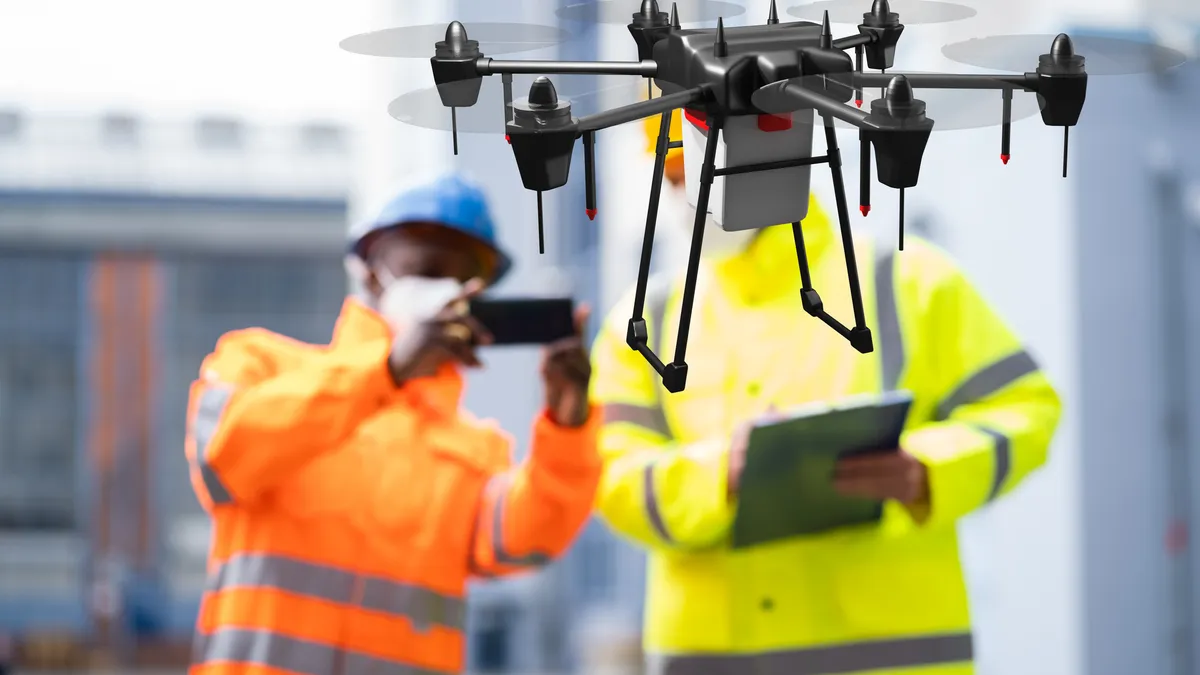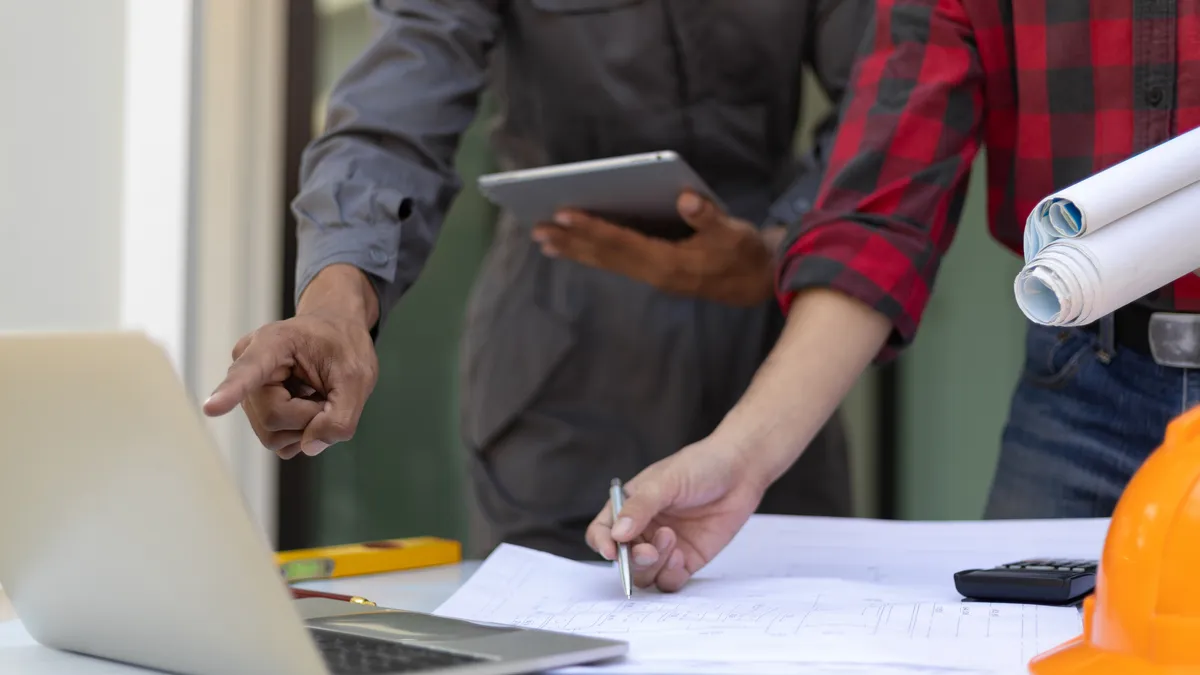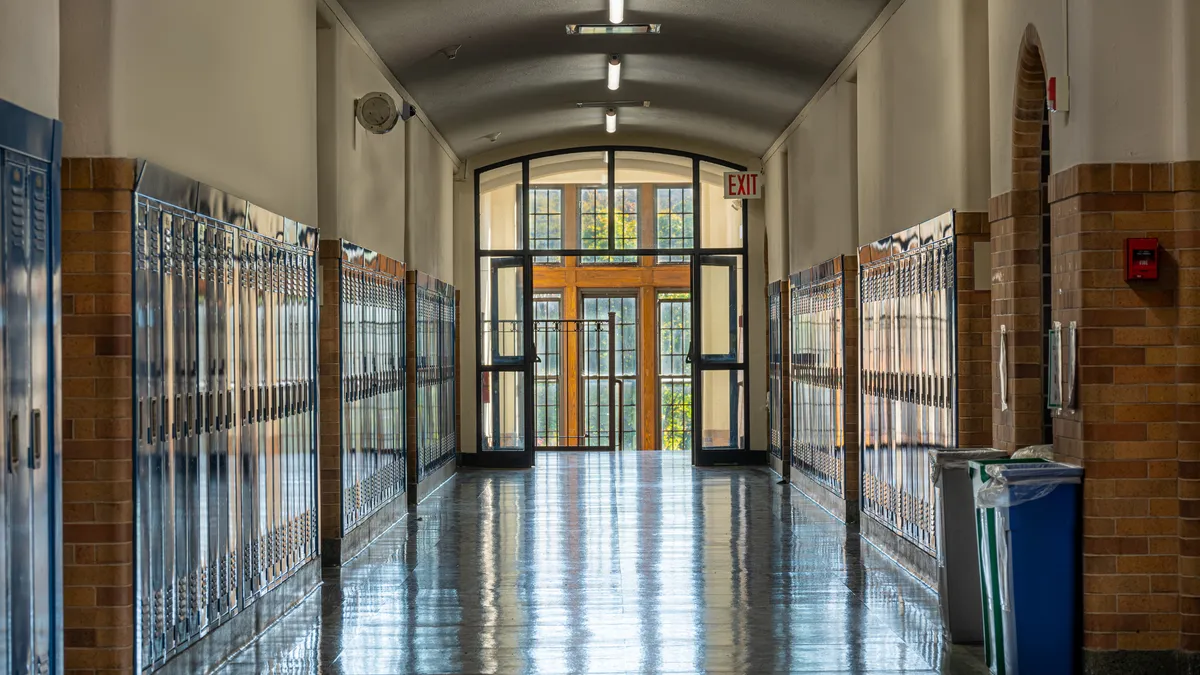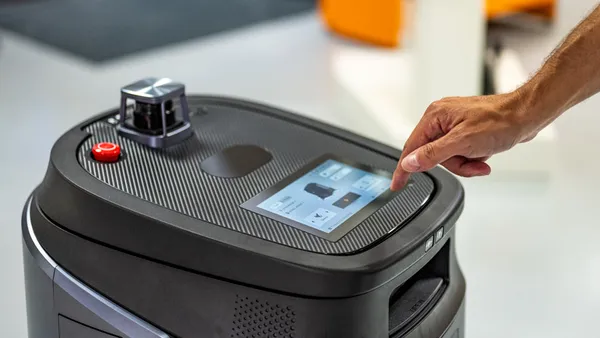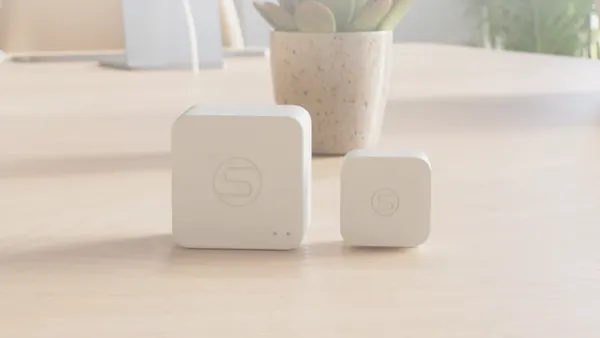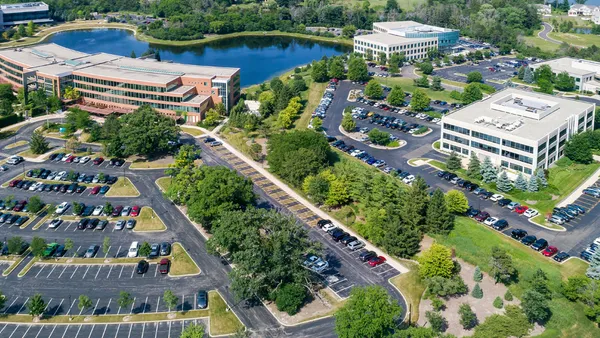Dive Brief:
- Joulea is developing an air leakage visualizer system as part of a $1.5 million Department of Energy project, the company said in a news release shared with Facilities Dive Sept. 5.
- The funding comes from DOE’s Buildings Energy Efficiency Frontiers & Innovation Technologies program, or BENEFIT, which is aimed at developing retrofit practices and technology to cut carbon emissions, improve flexibility and resilience and lower energy costs.
- The ALV system is expected to reduce the time, cost, and disruption involved in sampling buildings for air leaks, Joulea said in the release. That sampling can help facilities managers facilitate repairs or renovations to significantly decrease building energy consumption.
Dive Insight:
Building air leakages are blamed for an estimated 1,172 terawatt-hours of energy loss per year in the U.S., according to Joulea. The National Institute of Standards and Technology points to Department of Energy estimates, which suggest that air leakage or infiltration through building envelopes accounted for 6% of the total energy consumed by commercial buildings in 2010. ASHRAE further estimates that leaky variable air volume systems use 25% to 35% more fan energy than a tight system.
To combat air leakages, Joulea will work with the New Mexico Institute of Mining and Technology, the Oak Ridge National Laboratory and the Air Barrier Association of America to develop and test ALV technology prior to deployment.
“The ALV technique will help to scale air leakage detection by mitigating the logistics and costs around traditional methods such as a blower door test,” Joulea’s CEO, Ramtin Motahar, told Facilities Dive in an email. “In addition, Joulea's ability to identify every region of air leakage helps to bring a more encompassing solution compared to traditional methods that do not inspect every square inch of the building.”
The air leakage visualizer system the project is developing uses a set of cameras with onboard image processing to produce real-time, background-oriented schlieren images, or BOS, of building interiors and exteriors that show density variations in air, according to Joulea. The variations are used to quantify the hot or cold air leaking from a building. The BOS imaging will be integrated with thermal and infrared imaging on drone-based and manual platforms to further identify and quantify air leak sites, which facilities managers can then address to reduce building energy consumption.
The Atlanta-based company brings a drone-assisted autonomous flight system to that mix. It says this can be added to any commercial off-the-shelf drone system that includes a software development kit to control the drone’s position and has the ability to handle Joulea’s system as additional payload weight. Motahar said in an email that this autonomy can help the DOE fly drones with a “very tight tolerance to standardize the sensor data that is captured during the flights.”
“When we do that, we can then easily look into the actual digital image of [the building]. If the issue is coming from the outside, [we explain] how that can be addressed by the building owners so that they can send a contractor to look at it,” Motahar said in an interview. “But, if we're not able to see that issue from the outside, then we assume that it's somehow coming from inside and … we need to assess the issue with the building owners on the inside, [for example] of the 14th floor in the northwest corner of the building.”
Joulea will implement the ALV technology across its processes to help its clients identify repairs and upgrades to their building systems so that “they can meet their environmental, social and governance goals and increase net operating income,” Motahar said in the release.
BENEFIT, the program funding this project, plans to award a total of $46 million to 29 projects across 15 states to develop advanced technologies and spur innovation in air conditioning, space and water heating, thermal and battery storage, plug loads and lighting and the building envelope “that have significant potential for equitable carbon savings,” the DOE said.



